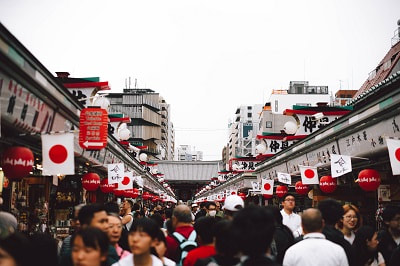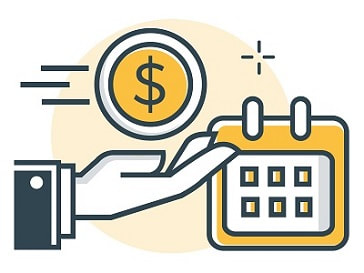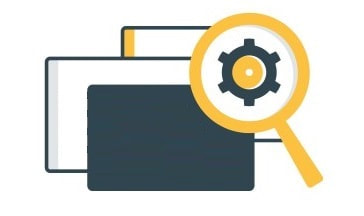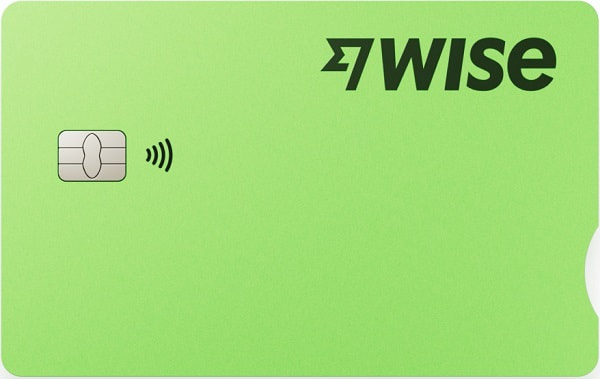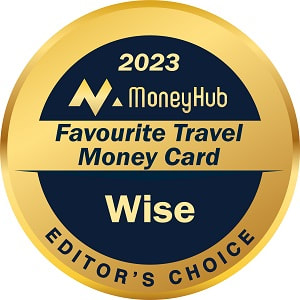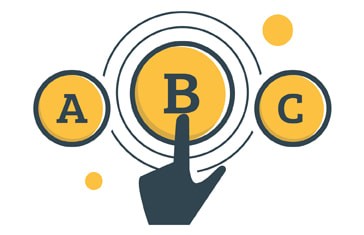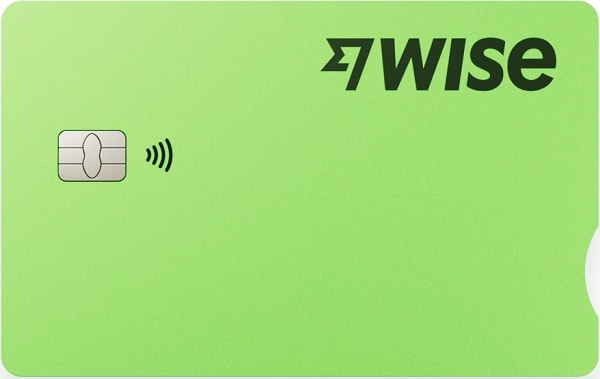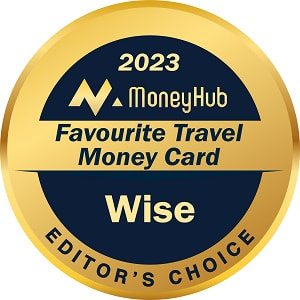Japan Travel Money - Best Options for Kiwis 2024
Our guide outlines everything you need to know about spending money in Japan, specifically cash vs debit and credit cards vs travel money cards.
Updated 3 January 2024
Summary:
Our guide explains everything you need to know to make travelling in Japan a cost-effective experience. We cover:
Advertising disclosure: We may receive a payment if you sign up for a card via MoneyHub - please read our advertising policy for more details.
Related guide: The Best Travel Money Cards
- Japan is popular year-round with New Zealanders, but the costs of visiting can be high, especially in Tokyo, Kyoto and the ski resorts.
- Despite a technology-based economy and society, Japan relies on cash for everyday purchases which means card use isn't widespread. For example, ordering food at machines, buying metro tickets and street purchases are usually cash transactions.
- The official currency of Japan is the Yen, often represented as JPY or with the "¥" symbol locally. Over the past year, the exchange rate for NZD to JPY has seen some fluctuations, but on average, 1 NZD hovers between 65 and 90 JPY. As the NZD weakens, a trip to Japan gets more expensive, and vice versa. However, the Yen is generally weak which makes Japan cheaper to visit than a lot of people first realise.
- Most New Zealanders will pre-book and/or prepay hotels, Airbnb and train tickets, but on-the-ground costs can be a lot more than prepaid costs. For this reason, having the most economical and convenient payment method for Japan makes every dollar go further.
- We are confident in suggesting that travelling in Japan requires a mixture of both cash and card, with a solution that offers the best FX rates with minimal fees for ATM withdrawals.
Our guide explains everything you need to know to make travelling in Japan a cost-effective experience. We cover:
- Option 1 - Using Cash in Japan
- Option 2 - Using NZ-Issued Debit and Credit Cards in Japan
- Option 3 - Using Travel Money Cards (Including the Wise Debit Card) in Japan
- Must-Know Facts for Using Money in Japan
- NZD to JPY Conversion and Spending JPY - Frequently Asked Questions
- Our Conclusion
Advertising disclosure: We may receive a payment if you sign up for a card via MoneyHub - please read our advertising policy for more details.
Related guide: The Best Travel Money Cards
Option 1 - Using Cash in Japan
If you want physical JPY notes before leaving New Zealand for Japan, you have a couple of options:
Getting JPY Cash from an NZ Bank: Most NZ banks have stopped offering FX cash services; Westpac is currently the only provider, but you'll need to be an existing Westpac customer to swap NZD for JPY notes.
Getting JPY Cash from a Beaurau de Change/Forex Booth:
The primary operators are travel money booths like Travelex and No1 Currency. However, the FX rates are well below mid-market rates, meaning you'll get less JPY for your NZD than you otherwise would if you used Westpac's services or withdrew JPY from an ATM once you're in Japan.
Getting JPY Cash When You Arrive in Japan:
Our View: We've found that the FX rates at Forex booths aren't as favourable as those offered by Westpac (for JPY and other currencies). Furthermore, Westpac's JPY rates aren't as good as those from Wise. In practical terms, if you use Wise to withdraw money from an ATM in Japan, you'll get an extra JPY 200 - JPY 500 for every NZ$100 you take out (compared to changing it with the FX booths), thanks to Wise's superior rates and lower fees.
Bonus: The Wise Debit Card offers withdrawals of up to NZ$350 per month without charging a transaction fee, meaning you can withdraw up to around JPY 30,000 in cash without paying FX transaction fees (after NZ$350, it's a flat 1.75% fee).
Know This: If you make a one-off withdrawal of say, the equivalent of NZ$1,000 while outside of New Zealand, Wise will charge you fees on the $650, whereas the first $350 per month is free.
Getting JPY Cash from an NZ Bank: Most NZ banks have stopped offering FX cash services; Westpac is currently the only provider, but you'll need to be an existing Westpac customer to swap NZD for JPY notes.
Getting JPY Cash from a Beaurau de Change/Forex Booth:
The primary operators are travel money booths like Travelex and No1 Currency. However, the FX rates are well below mid-market rates, meaning you'll get less JPY for your NZD than you otherwise would if you used Westpac's services or withdrew JPY from an ATM once you're in Japan.
Getting JPY Cash When You Arrive in Japan:
- If you want to have physical Japanese Yen on hand for your arrival, there are ATMs in the arrivals areas and arrival concourses of Tokyo Narita, Tokyo Haneda, Osaka Kansai and all other major airports. The ATM fee you'll pay to withdraw money depends on your bank; for example, Kiwibank will charge NZ$6 while ANZ is free. Any ATM fee will be deducted from your bank account when you withdraw.
- You'll likely receive 1,000 Yen bills, which are worth around NZ$11-$13 each (depending on the FX rate at the time), but if you get 10,000 or 5,000 Yen notes, you can use them for small purchases without issue.
Our View: We've found that the FX rates at Forex booths aren't as favourable as those offered by Westpac (for JPY and other currencies). Furthermore, Westpac's JPY rates aren't as good as those from Wise. In practical terms, if you use Wise to withdraw money from an ATM in Japan, you'll get an extra JPY 200 - JPY 500 for every NZ$100 you take out (compared to changing it with the FX booths), thanks to Wise's superior rates and lower fees.
Bonus: The Wise Debit Card offers withdrawals of up to NZ$350 per month without charging a transaction fee, meaning you can withdraw up to around JPY 30,000 in cash without paying FX transaction fees (after NZ$350, it's a flat 1.75% fee).
Know This: If you make a one-off withdrawal of say, the equivalent of NZ$1,000 while outside of New Zealand, Wise will charge you fees on the $650, whereas the first $350 per month is free.
Using JPY Cash - Pros and Cons
Pros:
Cons:
Overall, you'll be reliant on cash in Japan on a daily basis, so making sure you can access it with minimal fees while getting the best exchange rate is essential - we outline how to do this below.
- Universal Acceptance: Japan loves cash, and you'll need it more than you think. It's easier to have a stack of 1,000 JPY notes on you to use when you can't pay by card, which could be a few times a day.
Cons:
- Safety Concerns: While Japan is safe and theft against tourists is virtually unheard of, carrying large amounts always poses a risk, especially in crowded areas. However, you can always leave a portion of JPY in a hotel room safe or keep it somewhere secure on you.
- Airport Exchange Woes: While convenient, exchanging NZD to JPY at the airport can be costly if you use a high-fee debit card at an ATM or get a bad rate at the Forex kiosk in New Zealand or Japan. This is because rates are often marked up, and there might be hidden commission fees, reducing the amount of JPY you receive for every NZD you change.
Overall, you'll be reliant on cash in Japan on a daily basis, so making sure you can access it with minimal fees while getting the best exchange rate is essential - we outline how to do this below.
If I have spare JPY on the last day I'm in Japan, what should I do with them?
- Spare notes and coins have a habit of gathering dust back in New Zealand, and it may be some time before you visit Japan again. The best way to avoid having leftover currency is to spend the notes and coins on your last day; many people make a part payment alongside their card to settle a final bill, for example a lunch or dinner, before they fly out. Or you can put the cash towards the hotel bill if you're settling the bill at the end of your stay.
- You may be able to convert them back to NZD within Japan, or you can do this when you return to New Zealand. The JPY/NZD rate isn't likely to be market-leading at an FX kiosk. However, having NZD you can spend is more useful than JPY notes that sit there, so it's a cost worth incurring.
- Lastly, if you know someone visiting Japan in the future, giving them JPY notes and coins makes for a nice present they'll appreciate.
Option 2 - Using NZ-Issued Debit and Credit Cards in Japan
Many New Zealanders will use a debit and/or credit card when in Japan to pay for meals, long-distance transport and shopping.
What Do New Zealand Banks Charge for Card Use? Most banks impose foreign transaction fees ranging from 0% to 3.5% of the total transaction amount. This fee is atop the exchange rate margin the bank adds to the daily exchange rate. Some banks might also charge a flat fee for overseas ATM withdrawals.
For example, if you're using an ANZ Visa Debit or credit card, you'd typically incur a fee of 1.30% of the transaction amount when you make a purchase overseas per the ANZ's website while Kiwbank's debit cards will charge you 2.50%. The Co-operative Bank goes higher with a 2.60% fee. If you withdraw from an ATM, you may also pay an additional overseas ATM fee; it depends on the bank.
More details: Detailed bank charges are in our Debit and Credit Cards FX Fee comparison.
What Do New Zealand Banks Charge for Card Use? Most banks impose foreign transaction fees ranging from 0% to 3.5% of the total transaction amount. This fee is atop the exchange rate margin the bank adds to the daily exchange rate. Some banks might also charge a flat fee for overseas ATM withdrawals.
For example, if you're using an ANZ Visa Debit or credit card, you'd typically incur a fee of 1.30% of the transaction amount when you make a purchase overseas per the ANZ's website while Kiwbank's debit cards will charge you 2.50%. The Co-operative Bank goes higher with a 2.60% fee. If you withdraw from an ATM, you may also pay an additional overseas ATM fee; it depends on the bank.
More details: Detailed bank charges are in our Debit and Credit Cards FX Fee comparison.
Using NZ Bank Cards - Pros and Cons
Pros:
Cons:
Our View:
Related guide: The Best Travel Money Cards
- Convenience: Your NZ debit or credit card (and travel money card) is versatile and will be accepted anywhere cards are taken, but that isn't everywhere in Japan - cash is still the go-to payment method at many establishments.
- Tracking: One underrated advantage is the ability to track your expenses. With mobile banking apps, you can keep tabs on your spending, set budgets, and even receive instant transaction alerts. Japan, despite a weak currency, is still going to have some big costs and keeping track of your spending is essential.
Cons:
- Unpleasant Surprises: The cost of convenience can be high, and what NZ banks charge their customers to use a card overseas varies. The combined effect of foreign transaction fees and the bank's exchange rate margin can result in you paying significantly more than expected. Make sure you know the fees you'll be charged by reading your bank's website - our summary of overseas debit and credit card fees explains more.
- Dynamic Currency Conversion (DCC) Pitfalls: Sometimes you are offered to pay in NZD instead of JPY at card terminals in Japan. It might seem tempting to accept the NZD amount, but this service, called DCC, will almost always result in higher costs as the provider takes a margin, and the exchange rates used are often less favourable, and there might be hidden fees as well. When you agree to pay in JPY, you'll always get the bank or travel money card's best FX rate.
- Potential Card Issues: There's always a risk of your card being declined, skimmed, or even captured by ATMs. While these issues are rare and Japan isn't a place associated with bank fraud, having a backup card is good, alongside a sufficient level of cash (e.g. 1,000 JPY notes and some coins).
Our View:
- While using a New Zealand bank debit or credit card in Japan offers undeniable convenience, too many New Zealanders pay far too much in bank fees for the privilege of doing so.
- It's not unreasonable to spend around NZ$2,000 to $5,000 for a couple to have two weeks in Japan. Paying $150+ in bank fees and getting bad NZD/JPY rates during the week is best avoided. Some banks are fair, but many fee-gauge and charge you a small (but still hefty) percentage on every time your card is used. We don't think paying the bank 2.50%+ on every dollar you spend is a good use of money.
- Please double-check the fees associated with your specific bank and consider alternative options like travel-specific or multi-currency cards that offer better rates and fewer fees.
Related guide: The Best Travel Money Cards
Option 3 - Using Travel Money Cards (Including the Wise Debit Card) in Japan
Know This First: Our review and comparison of travel money cards confirms Wise as the best option, with no card a close second. This includes options from Travelex, OneSmart and Cash Passport. For this reason, we've focused on Wise for this section to explain what you need to know.
Getting Familiar with the Wise Debit Card Usage in Japan
Wise offers a travel money card that lets you have multiple currency wallets and comes with a physical and digital debit card. This includes JPY, meaning you can buy JPY in advance and store it in a JPY digital wallet. If you prefer to load NZD rather than lock in an JPY forex rate, you can do that too. This means when you spend in JPY, transactions are converted into NZD and deducted from your balance at the forex rate at the time of purchase.
What Does Wise Charge for Card Use? Wise prides itself on transparent fees and real exchange rates. They charge a small conversion fee (around 0.47%) when you convert your money to JPY, which is typically much lower than traditional banks, with the additional benefit of leading FX rates.
ATM withdrawals are free up to a certain limit (NZ$350 per month), after which a 1.75% fee is applied. However, if you make a one-off withdrawal of say, the equivalent of NZ$1,000 while outside of New Zealand, Wise will charge you fees on the $650, whereas the first $350 per month is free.
Getting Familiar with the Wise Debit Card Usage in Japan
Wise offers a travel money card that lets you have multiple currency wallets and comes with a physical and digital debit card. This includes JPY, meaning you can buy JPY in advance and store it in a JPY digital wallet. If you prefer to load NZD rather than lock in an JPY forex rate, you can do that too. This means when you spend in JPY, transactions are converted into NZD and deducted from your balance at the forex rate at the time of purchase.
What Does Wise Charge for Card Use? Wise prides itself on transparent fees and real exchange rates. They charge a small conversion fee (around 0.47%) when you convert your money to JPY, which is typically much lower than traditional banks, with the additional benefit of leading FX rates.
ATM withdrawals are free up to a certain limit (NZ$350 per month), after which a 1.75% fee is applied. However, if you make a one-off withdrawal of say, the equivalent of NZ$1,000 while outside of New Zealand, Wise will charge you fees on the $650, whereas the first $350 per month is free.
Using the Wise Debit Card - Pros and Cons
Pros:
Cons:
Our View: The Wise debit card, with its transparent fee structure and competitive exchange rates, is a value-delivering choice for many travellers in Japan. Combining the card with some cash will ensure you're prepared for all situations, and with zero FX fees on withdrawals up to NZ$350 per month (around JPY 30,000), the card delivers on value.
Related guide: The Best Travel Money Cards
- Acceptance: You can use a Wise card anywhere Visa or Mastercard are accepted which covers any Japanese business that takes cards and all ATMs.
- Competitive Rates: Wise uses the real exchange rate (the one you see on Google) and thus avoids the typical markup that banks add.
- Multi-currency: The Wise borderless account lets you hold and manage money in multiple currencies (including JPY), which can be extremely useful when travelling to more than just Japan.
- Transparent Fees: You always know what you're being charged, with no hidden costs.
- Instant Notifications: The Wise app notifies you immediately after every transaction, helping you keep track of your spending.
Cons:
- ATM Withdrawal Limit: While they offer free ATM withdrawals, it's only up to a certain limit. Beyond that, there's a 1.75% fee.
- Not a Credit Card: The Wise card is a debit card, meaning you can't spend money you don't have - we argue this is also a positive feature to avoid holiday debt.
Our View: The Wise debit card, with its transparent fee structure and competitive exchange rates, is a value-delivering choice for many travellers in Japan. Combining the card with some cash will ensure you're prepared for all situations, and with zero FX fees on withdrawals up to NZ$350 per month (around JPY 30,000), the card delivers on value.
Related guide: The Best Travel Money Cards
Our Top-Rated Travel Money Card - The Wise Debit Card
|
Must-Know Tips for Using Money in Japan
Cash Is King
While card payments are rising in urban areas, Japan remains a predominantly cash-based society. Make sure to have sufficient Yen on hand, especially when travelling outside major cities. ATMs at convenience stores and post offices usually accept New Zealand-issued debit cards and travel money cards.
Tipping Is Not Common
In Japan, tipping is not part of the culture. Service staff do not expect tips; offering one can sometimes cause confusion.
Know the ATM Hours - Some Aren't 24/7
Many ATMs in Japan are located inside convenience stores which aren't open 24/7. Plan withdrawals accordingly.
Understand Tax-Free Shopping
New Zealanders can benefit from tax-free shopping at designated stores. Make sure to carry your passport, as it's required for the tax exemption process - more details are outlined here.
Keep Track of Your Expenditures
It's easy to lose track of spending, and Japan mixes cash with cards making it harder to track everything. To avoid this, we suggest an app like Wise, which gives you instant payment notifications (when you're on WIFI or data), which helps you stay aware of your spending.
Understand Return Policies
Japanese stores can have stricter return and exchange policies than in New Zealand. It's essential to ask and understand the terms before making significant purchases.
NZD to JPY Conversion and Spending JPY - Frequently Asked Questions
How does the NZD usually fare against the AUD?
The NZD-JPY exchange rate can fluctuate based on economic factors, and in 2023 has been as high as 90 JPY to 1 NZD. You can check the live rate here.
Can I use my travel money card, NZ debit card, or credit card everywhere in Japan?
While major hotels and establishments accept cards, many places, especially outside Tokyo, may only accept cash. It's recommended to carry both cards and cash for flexibility.
Is Japan expensive for NZ tourists?
Japan can be pricey, but you can manage costs with careful planning. Major cities like Tokyo and Kyoto might be more expensive, but many budget-friendly options like guesthouses, local eateries, and free attractions exist.
What's the best way to get the most JPY for my NZD?
Services like Wise can offer better exchange rates than traditional banks or airport exchange counters. The rates are better, the fees are lower, and there's an app to track all spending so you know exactly what you paid for something.
Our Conclusion
Japan is a unique travelling experience; overpaying for the Yen you'll spend can easily be avoided with the right payment card.
.
To access Yen, we suggest considering the following:
Cash
NZ Bank Cards
Wise Debit Card (acting as a Travel Money Card)
Our View: To make every dollar go further, we suggest considering the Wise Debit Card as your primary spending tool, ensuring you get great rates and minimal fees. You can then use your NZ-issued debit card and/or credit card as a backup. However, if you do want to withdraw cash, Wise allows up to around JPY 30,000 a month free of fees.
.
To access Yen, we suggest considering the following:
Cash
- Japan's strong inclination towards cash transactions, especially in rural and remote regions, makes having Yen on hand essential.
- Though convenient, exchanging NZD at airports like Narita or Haneda is best avoided as the rates won't match city-centre foreign exchange bureaus or local banks.
- The Wise Debit Card lets you withdraw JPY at an ATM and avoid fees (on amounts up to NZ$350 a month) while also spending using chip and pin and contactless payments.
NZ Bank Cards
- Recently, major Japanese cities and tourist hubs have considerably increased card acceptance. However, the fees charged by NZ banks on forex can be high - somewhere between 0% and up to 2.60%, in addition to overseas ATM fees if you withdraw cash.
Wise Debit Card (acting as a Travel Money Card)
- The Wise Debit Card provides a transparent, multi-currency option with competitive exchange rates and minimal fees. However, it's essential to have a reasonable cash reserve, given Japan's strong cash culture.
- With the Wise card, users can benefit from cost-efficient withdrawals up to a specified monthly limit without facing FX conversion fees.
Our View: To make every dollar go further, we suggest considering the Wise Debit Card as your primary spending tool, ensuring you get great rates and minimal fees. You can then use your NZ-issued debit card and/or credit card as a backup. However, if you do want to withdraw cash, Wise allows up to around JPY 30,000 a month free of fees.
Our Top-Rated Travel Money Card - The Wise Debit Card
|
Related Guides:
Country-Specific Travel Money Guides:
- Compare Travel Money Cards
- Travelex Money Card vs Wise Debit Card
- Wise Debit Card vs Cash Passport Travel Money Card
- Wise Debit Card vs Air New Zealand OneSmart Travel Money Card
- Wise Debit Card Review
- Foreign Currency Debit and Credit Card Fees
- Foreign Currency Exchange
- Compare Travel Insurance
Country-Specific Travel Money Guides:

